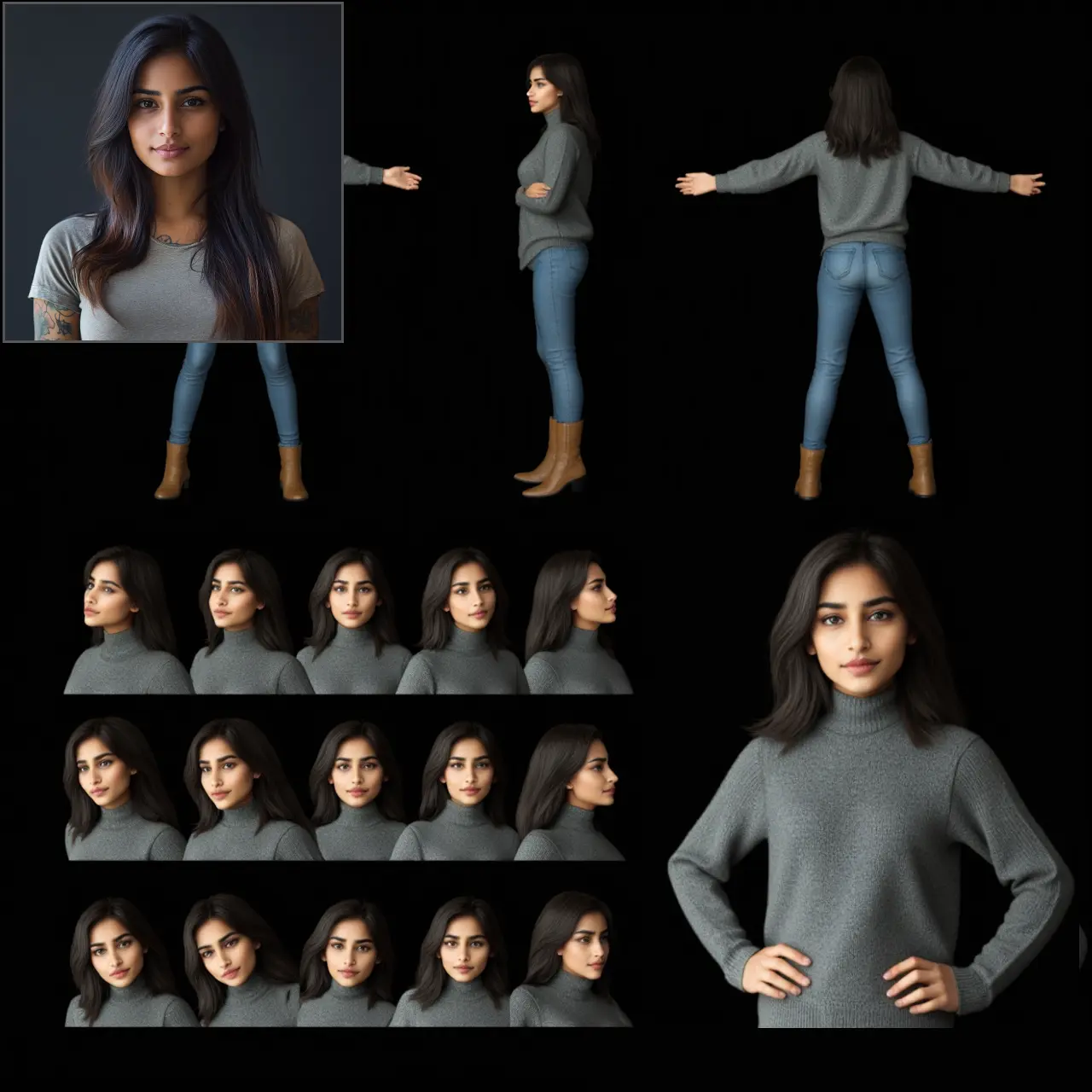ComfyUI Node: MinusZone - KohyaSSTrain(old version)
MZ_KohyaSSTrain
CategoryMinusZone - TrainTools/kohya_ss/v1
MinusZoneAI (Account age: 350days) Extension
ComfyUI-TrainTools-MZ Latest Updated
2025-02-24 Github Stars
0.05K
How to Install ComfyUI-TrainTools-MZ
Install this extension via the ComfyUI Manager by searching for ComfyUI-TrainTools-MZ- 1. Click the Manager button in the main menu
- 2. Select Custom Nodes Manager button
- 3. Enter ComfyUI-TrainTools-MZ in the search bar
Visit ComfyUI Online for ready-to-use ComfyUI environment
- Free trial available
- 16GB VRAM to 80GB VRAM GPU machines
- 400+ preloaded models/nodes
- Freedom to upload custom models/nodes
- 200+ ready-to-run workflows
- 100% private workspace with up to 200GB storage
- Dedicated Support
MinusZone - KohyaSSTrain(old version) Description
Facilitates AI model training with KohyaSS framework for AI artists to optimize models with specific datasets and configurations efficiently.
MinusZone - KohyaSSTrain(old version):
MZ_KohyaSSTrain is a node designed to facilitate the training of AI models using the KohyaSS framework. This node is particularly useful for AI artists who want to fine-tune their models with specific datasets and configurations without delving into the complexities of the underlying code. The primary goal of MZ_KohyaSSTrain is to provide a streamlined and user-friendly interface for configuring and executing training processes, ensuring that users can achieve high-quality results with minimal technical overhead. By leveraging this node, you can customize various aspects of the training process, such as learning rates, training steps, and advanced configurations, to optimize the performance of your models.
MinusZone - KohyaSSTrain(old version) Input Parameters:
workspace_config
This parameter specifies the configuration for the workspace where the training will take place. It includes details about the environment, paths, and other essential settings required for the training process. Proper configuration of the workspace is crucial for ensuring that all necessary files and resources are correctly located and accessible during training.
train_config_template
This parameter points to the template configuration file that outlines the training settings. It includes default values and structures that guide the training process. Using a template helps maintain consistency and ensures that all necessary parameters are defined. You can customize this template to fit your specific training needs.
ckpt_name
This parameter defines the name of the checkpoint file where the model's state will be saved during training. Checkpoints are essential for resuming training from a specific point and for evaluating the model's performance at different stages. Ensure that the checkpoint name is unique and descriptive to avoid confusion.
max_train_steps
This parameter sets the maximum number of training steps to be executed. Training steps are iterations where the model learns from the data. Setting an appropriate number of steps is crucial for balancing training time and model performance. Too few steps may result in underfitting, while too many can lead to overfitting.
max_train_epochs
This parameter specifies the maximum number of epochs for training. An epoch is a complete pass through the entire training dataset. Similar to training steps, the number of epochs should be chosen carefully to ensure optimal model performance without overfitting.
save_every_n_epochs
This parameter determines how frequently the model's state should be saved during training, based on the number of epochs. Regular saving allows you to keep track of the model's progress and provides recovery points in case of interruptions. Choose a frequency that balances storage usage and the need for checkpoints.
learning_rate
This parameter sets the learning rate for the training process. The learning rate controls how much the model's weights are adjusted during each training step. A higher learning rate can speed up training but may cause instability, while a lower rate ensures stable convergence but may require more steps. Adjust this parameter based on your specific training requirements.
advanced_config
This optional parameter allows you to specify additional advanced configurations for the training process. These configurations can include various hyperparameters and settings that fine-tune the training process. Providing advanced configurations can help optimize the model's performance for specific tasks.
MinusZone - KohyaSSTrain(old version) Output Parameters:
trained_model
This output parameter provides the final trained model after the completion of the training process. The trained model can be used for inference or further fine-tuning. It is essential to evaluate the model's performance on validation data to ensure it meets your requirements.
training_logs
This output parameter contains the logs generated during the training process. Training logs provide valuable insights into the training progress, including metrics such as loss and accuracy. Analyzing these logs can help you understand the model's behavior and make necessary adjustments to the training parameters.
MinusZone - KohyaSSTrain(old version) Usage Tips:
- Ensure that your workspace configuration is correctly set up to avoid issues with file paths and resource accessibility.
- Start with a lower learning rate and gradually increase it if the training process is stable to find the optimal rate for your model.
- Regularly save checkpoints to monitor the model's progress and have recovery points in case of interruptions.
- Use advanced configurations to fine-tune the training process for specific tasks, but ensure you understand the impact of each parameter.
MinusZone - KohyaSSTrain(old version) Common Errors and Solutions:
"读取配置文件失败: {workspace_config_file}"
- Explanation: This error indicates that the configuration file for the workspace could not be read, possibly due to incorrect file paths or missing files.
- Solution: Verify that the workspace configuration file exists at the specified path and is accessible. Ensure that the file paths in the configuration are correct.
"args: {json.dumps(config, indent=4)}"
- Explanation: This error suggests that there is an issue with the arguments passed to the training function, possibly due to missing or incorrect parameters.
- Solution: Check the input parameters for the training function and ensure that all required parameters are provided and correctly formatted.
"MZ_KohyaSSUseConfig_call: {args}"
- Explanation: This error indicates a problem with the configuration used for the training process, possibly due to invalid or conflicting settings.
- Solution: Review the configuration settings and ensure that they are valid and do not conflict with each other. Adjust the settings as necessary to resolve the issue.
MinusZone - KohyaSSTrain(old version) Related Nodes
- Description
- MinusZone - KohyaSSTrain(old version):
- MinusZone - KohyaSSTrain(old version) Input Parameters:
- MinusZone - KohyaSSTrain(old version) Output Parameters:
- MinusZone - KohyaSSTrain(old version) Usage Tips:
- MinusZone - KohyaSSTrain(old version) Common Errors and Solutions:
- Related Nodes
RunComfy is the premier ComfyUI platform, offering ComfyUI online environment and services, along with ComfyUI workflows featuring stunning visuals. RunComfy also provides AI Playground, enabling artists to harness the latest AI tools to create incredible art.



